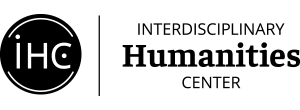Synaesthesia in the Arts, Religion, and Cognitive Neuroscience
Conveners
Ann Taves (Professor, Religious Studies) taves@religion.ucsb.edu
Jared Lindahl (Graduate student, Religious Studies) lindahl@umail.ucsb.edu
Statement of Purpose
The research interest of the group is synaesthesia in the arts, religion, and cognitive neuroscience. Synaesthesia, the experience of a sensation in one sensory modality producing an involuntary and simultaneous sensory experience in another sensory modality, has been the focus of sustained scientific inquiry in the last two decades. Synaesthetic metaphors that consciously link two or more sensory modalities as well as descriptions of apparent synaesthetic experiences have been widely observed in the arts and in religious traditions. This RFG will examine the phenomenon of synaesthesia from a multi-disciplinary perspective with the aim of generating new research questions for both scientists and humanists interested in the interaction between cognition and culture. Broadly speaking, we want to explore (1) how new scientific research on synaesthesia might enhance our ability to understand the way that synaesthetic experiences have been incorporated in the arts and religious traditions and, conversely, (2) what new questions the incorporation, utilization, and apparent cultivation of synaesthetic experiences by artists and religious adepts within various traditions might suggest for cognitive neuroscience. We believe that exploring the phenomenology of synaesthesia in religion, art, and science has potential not only to further our understanding of synaesthesia itself, but also the relationship between religion and culture, art and perception, religious experience and artistic creation, and science and human experience.
Participants
Ann Taves (Professor, Religious Studies)
Jared Lindahl (Graduate student, Religious Studies)
Michael Gazzaniga (Professor, Psychology)
Leda Cosmides (Professor, Psychology)
Jeanette Favrot Peterson (Professor, Art History)
Laurie Monahan (Associate Professor, Art History)
John Hajda (Assistant Professor, Music)
Tom Carlson (Associate Professor, Religious Studies)
Barbara Holdrege (Associate Professor, Religious Studies)
Juan Campo (Associate Professor, Religious Studies)
Activities Planned
- Four meetings of the RFG, the first at the end of the Fall Quarter and three in the Winter Quarter.
- December 4 at noon. Organizational meeting of the RFG. We will discuss the project proposal and decide on dates and times and possible readings for the next three meetings.
- January meeting. Synaesthesia and Cognitive Neuroscience. Tentative readings:
- J. Ward and J.B. Mattingley, “Synaesthesia: An Overview of Contemporary Findings and Controversies,” Cortex 42 (2006): 129-36.
- V. S. Ramachandran and E. M. Hubbard, “The Emergence of the Human Mind: Some Clues from Synesthesia,” in L. C. Robertson & N. Sagiv, Synesthesia: Perspectives from Cognitive Neuroscience (Oxford, 2005), 147-90.
- Roger Walsh, “Can Synaesthesia Be Cultivated? Indications from Surveys of Meditators,” Journal of Consciousness Studies 12 (2005): 5-17.
- February meeting: Synaesthesia in mystical traditions.
- March meeting: Synaesthesia in the arts.
- Spring Workshop/Conference tentatively scheduled for April 26-28, 2007.
- An opening panel presentation on “Sensory Experiences in the Mystical Traditions” featuring scholars of Jewish, Christian, and Muslim mystical traditions on the evening of April 26th.
- A one or two day workshop (April 27-28) on Synaesthesia in the Arts, Religion, and Cognitive Neuroscience. In addition to the members of the RFG and the panelists named above, we also plan to invite an outside cognitive neuroscientist and a specialist in the arts and synaesthesia.

